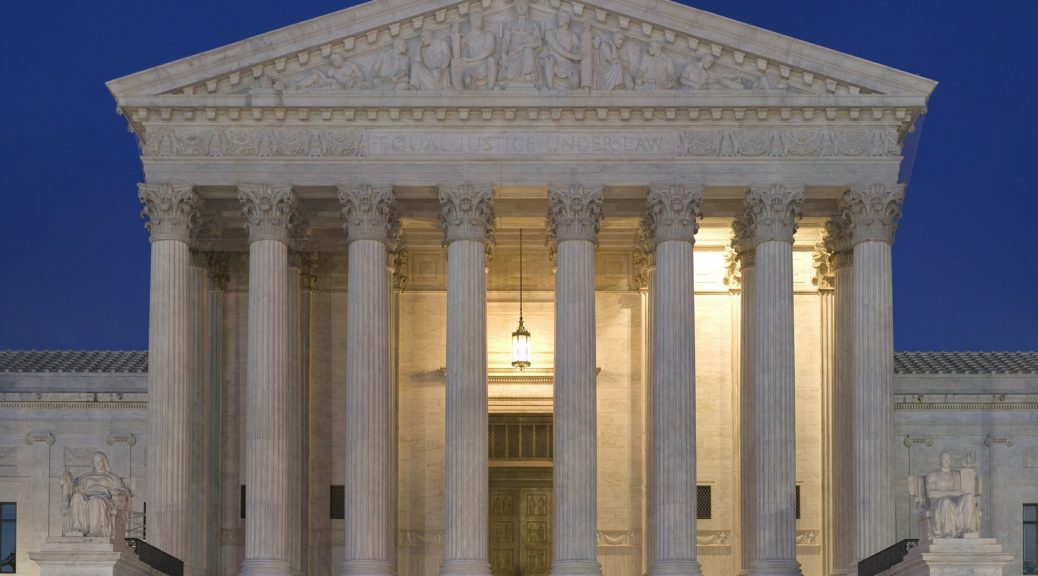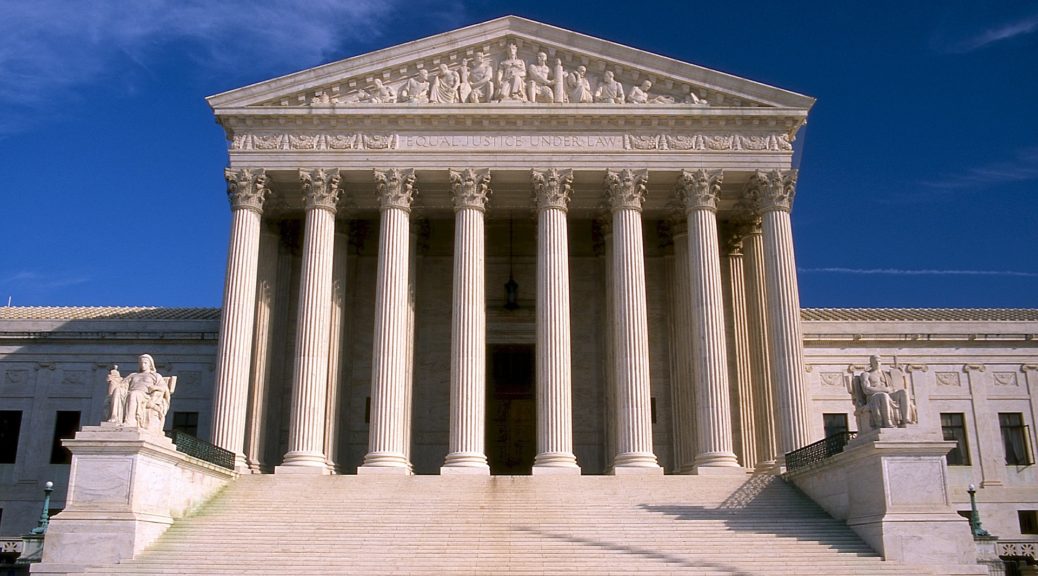Barbara Grutter, a rejected applicant of the University of Michigan Law School, brought suit claiming that the University’s consideration of race and ethnicity in its admissions process violated her rights under the Equal Protection Clause of the Fourteenth Amendment and Title VI of the Civil Rights Act of 1964.
During Grutter’s trial, there was ample evidence that showed the Law School did use race as a criteria in the decision-making process. Dennis Shields, the Director of Admissions when Grutter applied, said race was considered “to ensure that a critical mass of underrepresented minority students would be reached so as to realize the educational benefits of a diverse student body.”[1]
Erica Munzel, the Director of Admissions after Shields, defined “critical mass” to mean “a number that encourages underrepresented minority students to participate in the classroom and not feel isolated.”[2] Although Munzel did use the word “number,” she went on to say “there is no number, percentage, or range of numbers or percentages that constitute critical mass.”[3] The Law School presented evidence that a diverse student body was necessary “to enhance classroom discussion and the educational experience both inside and outside the classroom.”[4]
The United States District Court, E. D. Michigan, ruled in Grutter’s favor. The District Court held that the desire for a diverse student body was not a compelling government interest and even if it was, the policy was not narrowly tailored to further the objective since quotas were being used. The District Court found
“…it significant that the dean and the admissions director monitor the school’s ‘daily admissions reports,’ which classify applicants by race. These reports inform the reader how many students from various racial groups have applied, how many have been accepted, how many have been placed on the waiting list, and how many have paid a deposit. There would be no need for this information to be categorized by race unless it were being used to ensure that the target percentage is achieved.”[5]
The District Court found this to be a quota system and was thus, unconstitutional.
In a brief of Amici Curiae, the Deans of several top law schools argued that a diverse student body was essential for the law schools to meet their mission of training lawyers across all fields of business, government service, etc. The brief states that, “[a] diversity of backgrounds, life experiences, and cultural perspectives in the universities’ student bodies is essential to providing both a sound legal education for students and a firm foundation for graduates to serve and to lead thereafter.”[6]
Thomas Sowell, who writes about affirmative action, is not sure that diversity manifested by a “critical mass” of minority students is beneficial for all students. Sowell argues that “the assumption that a ‘critical mass’ is not only academically beneficial, but academically essential, has become prevailing dogma without empirical evidence being asked or given.” Sowell relies on
“[a] recent empirical study published by the National Bureau of Economic Research [that] found that ‘a higher percentage of Black schoolmates has a strong adverse effect on achievements of Blacks and, moreover, that the effects are highly concentrated in the upper half of the ability distribution.’”[7]
Although the United States District Court for the Eastern District of Michigan ruled in favor of Grutter, the decision was reversed by the United States Court of Appeals for the Sixth Circuit, which held that “…the Law School has a compelling interest in achieving a diverse student body.”[8] The Court of Appeals also held that the “Law School’s use of race was narrowly tailored because race was merely a “potential ‘plus’ factor” and because the Law School’s program was “virtually identical” to the Harvard admissions program described approvingly by Justice Powell”[9] in the Bakke decision.
In coming to its decision, the Sixth Circuit returned to Regents of the University of California v. Bakke, 438 U.S. 265 (1978) and concluded that the University of Michigan’s use of race in its decision making process did not constitute a quota and was constitutional.
Critics still claimed that “critical mass” was just a euphemism for quota and as such, was being used as more than just one criterion to attain a diverse student body. The Supreme Court granted certiorari.
In a 5 to 4 decision, the Supreme Court agreed with the Sixth Circuit. On June 23, 2003, the Court upheld the University of Michigan law school’s program because it only considered race as a plus which could be used by the admissions committee in striving to attain the “critical mass” of minorities needed to enhance the educational environment of the law school. This decision reaffirmed Bakke.
In the majority opinion, written by Justice O’Connor, the Court deferred to the judgment of the Law School’s admission committee that diversity was needed for the school to better meet its educational mission. “Attaining a diverse student body is at the
Heart of the Law School’s proper institutional mission, and its ‘good faith’ is ‘presumed’ absent ‘a showing to the contrary.’”[10]
In a dissenting opinion, Justice Scalia argued that the compelling state interest was no more than the University’s desire to have an elite law school. Justice Scalia pointed out that the school could easily attain class diversity by lowering its admissions requirements so that more minorities would be eligible for admission. Justice Thomas agreed with Scalia. In his opinion, Thomas wrote, “I believe blacks can achieve in every avenue of American life without meddling of university administrators.”[11]
Although lacking any solid evidence that diversity was needed for the school to meet its mission of training lawyers, the Court concluded that diversity should be considered a compelling State interest – at least in the Law School class. This part of the decision has led to some criticism other than from the dissenting Justices. As Alan Dershowitz writes:
[The Court] once again seemingly concerned itself far more with the description of the program than its actual application. The Court began by clearing up a central ambiguity of Bakke, with at least five justices clearly holding that diversity could serve as a compelling state interest for affirmative action programs.[12]
The original criticism that a “critical mass” was just another descriptive term for “quota” was not clarified in Justice O’Connor’s majority opinion. However, it appears that so long as a number is not used in describing what constitutes a “critical mass”, the use of race in the decision-making process will pass constitutional muster. As Dershowitz concludes,
“The Court’s 2003 amplification of the Bakke principle in the Michigan case[] did little to clarify the underlying rationale for taking race into account as a means toward eventually achieving a “color-blind” society. Nor did it satisfy critics who believe that diversity is a euphemism for “quotas,” or at least for “floors” for some groups (which, of course, become “ceilings” for others). The most that can be said for th[is] decision[] is that [it offers] a pragmatic solution to a difficult racial problem that may have no perfect theoretical solution.[13]”
The Michigan program did not have a two track system with numerical quotas for minorities. Also, the Michigan system used race as just one of many criteria, similar to the Harvard plan which had already been found to not be offensive to the Equal Protection clause of the Fourteenth Amendment. The decision of the Court is thus consistent with its dicta and holding in the Bakke case. Justice O’Connor did provide a warning that she expected the use of “race” as a criteria for attaining a “critical mass” of minority students in graduate schools to be short-lived. As she wrote in her majority opinion,
“Finally, race-conscious admissions policies must be limited in time. The Court takes the Law School at its word that it would like nothing better than to find a race-neutral admissions formula and will terminate its use of racial preferences as soon as practicable. The Court expects that 25 years from now, the use of racial preferences will no longer be necessary to further the interest approved today.[14]”
Justice Thomas believes that the 25 year time limit is not justified. He writes, “while I agree that in 25 years the practices of the law school will be illegal, they are, for the reasons that I have given, illegal now.”[15]
With this decision, affirmative action will be allowed in graduate school admissions decisions, at least for the near future. The decision making process, however, will not be easy. In an Associated Press report, Justin Pope points out that “[a]ffirmative action remains legally risky.”[16] Admissions committees will be watched by opponents of affirmative action to see if any digital representation is used to describe the quest for a diverse class. “In the last year, the threat of [] suits has persuaded a number of schools to cancel or open up summer, orientation and scholarship programs that had explicitly targeted minorities.”[17]
Proponents of affirmative action, although relishing the reaffirmation of Bakke, know that there are issues that still need to be addressed. The NAACP is concerned that the Michigan ruling may not go far enough.
“Shaw, of the NAACP, says he is comforted by what he feels is a broad and deep commitment among educators to diversity, and an overall willingness to spend money on the hard work of doing it legally…[b]ut he remains worried about the legal uncertainty concerning how the Michigan ruling, which addressed only admissions, applies to scholarships for minorities. And he notes continued skirmishing on the state level. “We’re much better than we would have been had we lost,” Shaw said. “But it’s one battle, and the war goes on.”[18]”
The Grutter decision of 2003 reaffirms the Bakke decision of 1979. Because the decision was close and the dissent was rigorous, the debates as to the constitutionality of affirmative action in regards to graduate school admissions continued. Until there is further clarification, race can be used as one criterion of many in making admissions decisions for college and graduate school. The Court was specifically dealing with medical and law schools in the decisions, but there is nothing in either opinion to rule out other graduate school programs from using the same criteria. Until we hear otherwise, affirmative action in college and graduate school admissions decisions will pass constitutional muster so long as no digital representation of either a number or a percentage is used to describe the “critical mass” necessary to realize racial diversity in the matriculating class.
Since the Grutter decision, four new justices have been added to the Supreme Court. Chief Justice John Roberts and Justice Samuel Alito were nominated by George W. Bush while Justices Sonia Sotomayor and Elena Kagan were nominated by President Obama. It can be predicted that these new justices are likely to split on the issue of affirmative action as it applies to graduate admissions; however, predictions are often wrong.
Even with Grutter, the lower courts have been struggling with this contentious issue. Since there is confusion, the Supreme Court has decided to listen to arguments and then, hopefully, clarify the issue of affirmative action; at least address its applicability to college and graduate school admissions. In Fisher v. University of Texas, arguments were heard on December 10, 2015. A decision on the Fisher case is expected this spring.
Actually, this will be the second time the Supreme Court will weigh in on Fisher. Originally, the U.S. Court of Appeals for the Fifth Circuit ruled that the University of Texas could use race as a factor in deciding college admissions. They agreed with the trial court which gave the University a summary judgment. The Supreme Court did not address the constitutionality of using race; instead they sent the case back because the lower courts did not use “strict scrutiny”[19] in evaluating the University of Texas admissions program.
When the Fifth Circuit again agreed with the lower court that the use of race was constitutional, the Supreme Court decided to re-hear arguments. It looked like the Court was ready to do away with affirmative action as to college and graduate school admissions. But now Justice Scalia has died and it appears that the Court is headed to a four to four split. With a split, the Fifth Circuit decision will hold; but only the courts in the Fifth Circuit will be bound to that decision.
[1] 123 S.Ct. 2325, 2333 (2003).
[2] Id.
[3] Id.
[4] Id. at 2334.
[5] 137 F.Supp.2d 821, 842 (2001).
[6] 2003 WL 554398 (U.S.)
[7] Thomas Sowell, Affirmative Action Around the World. Yale University Press, 2004. p. 143.
[8] Grutter v. Bollinger, 288 F.3d 732, 739 (6th Cit. Court of Appeals 2002).
[9] Grutter v. Bollinger, 123 S.Ct 2325, 2335.
[10] 123 S.Ct. 2325, 2329
[11] Id. At 2350.
[12] Alan Dershowitz, America On Trial, Warner Books 2004, p. 426.
[13] Id. At 427.
[14] 123 S.Ct. 2325, 2330.
[15] Id. At 2364.
[16] Commercial Appeal, June 21, 2004, A1.
[17] Id. At A3.
[18] Id.
[19] In constitutional law, the standard applied to suspect classifications (such as race) in equal-protection analysis and to fundamental rights (such as voting rights) in due-process analysis. Black’s Law Dictionary. Under strict scrutiny, the state must establish it has a compelling interest that justifies the law in question. Black’s Law Dictionary.
by Darryl S. Weiman, M.D., J.D.
Professor, Cardiothoracic Surgery, University of Tennessee Health Science Center and Chief of Surgery, VAMC Memphis, TN





